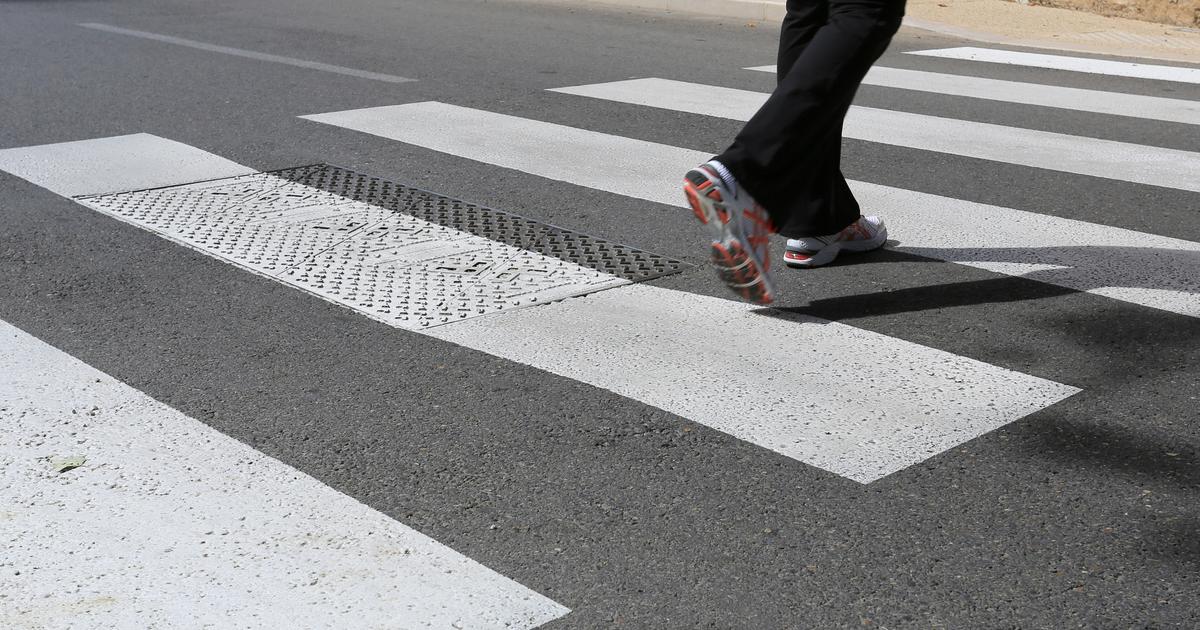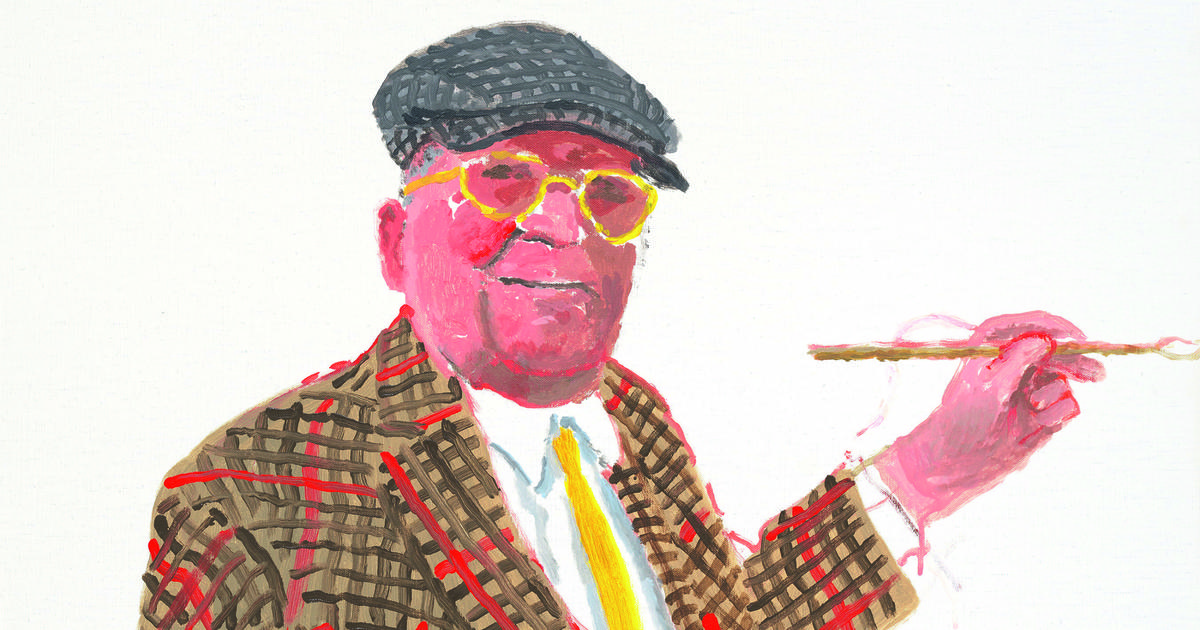A sofa, a stool, a desk on which his sketchbooks are stacked.
On the wall, sketches, a few paintings.
And then metal shelves where are stored his color palettes, models, books, skulls, a cross... It's there, in this workshop located in a warehouse area of La Garenne-Colombes, near Paris , close to the tramway, which Jean-Baptiste Boyer works.
Tattooed from head to toe and dressed all in black, the artist (born in 1990 in Versailles) is a young man of today, a young man nourished by historical references, such as the romantic painters, of whom he claims "the dramatic side.
Like its masters, who confronted the world and recorded the most tragic miscellaneous events (
The Raft of the Medusa,
by Géricault), reported the street fights during the revolutionary days (
Liberty guiding the people,
by Delacroix), protested against the occupation of Spain by Napoleonic troops (
The Disasters of War,
by Goya), he informed our era.
To discover
"06400 Cannes", the postcard from the Festival, episode 2: the memories of Elle Fanning, the confidences of Carla Bruni and the smile of Julia Roberts
Read alsoThe Thanks For Nothing collective brings together thinkers, artists and the general public around its symposium "Art and commitment"
An
angry
knight
"The work is a confession, I must testify", wrote in 1962 Albert Camus in his
Carnets
.
And it is the same postulate that inhabits Jean-Baptiste Boyer some eighty years later.
Evidenced by
The Shipwreck
, one of his last paintings, which immortalizes three sailors in danger on a fragile boat, attacked from all sides by three sirens.
It's hard not to think
of Dante's Barque
(Delacroix), or even the
Raft of the Medusa
and the comments of Jules Michelet, who declared that Géricault was only representing "the shipwreck of France, this hopeless raft, where she floated, beckoning to the waves, to the void, seeing no help.
Full screen
The Knight
, by Jean-Baptiste Boyer.
Francois Sejourne
An impression that Jean-Baptiste Boyer confirms when he specifies that “water symbolizes that in which humanity is immersed.
The ground gives way under our feet and the house burns”.
Just as impressive, his
Knight,
embodied by a character in current uniform – cap, sneakers, jeans with holes and jacket with patches –, holds in his hand a sword lowered towards the ground.
Jean-Baptiste Boyer compares him to "a warrior armed to defend himself and not to attack, a figure of protest filled with anger, like the example of young people fed on social networks, which are only vectors of violence and do not provide no outlet to express it".
Jean-Baptiste Boyer, he knew how to channel his own by multiplying the layers of paint, bringing out hope under the chiaroscuros.
soul painter
His painting is essentially composed of portraits of his relatives.
“I don't dwell so much on the resemblance as on the emotion they release.
What interests me is to capture their essence, their interiority, he underlines.
I make psychological portraits of characters anchored in a physical reality.”
On closer inspection, it is clear that each of his models looks a bit like him.
Like Delacroix depicting himself in a frock coat and top hat in
La Liberté guidant le peuple,
Jean-Baptiste Boyer is therefore this reader who holds in his hands a newspaper which is on fire (they were however so utopian), or this naked boy posing in a rural setting near two fully clothed men, one holding a skull, the other a dagger,
(The Lost Lambs)
.
This painting, devoid of eroticism and imbued with mystery, whose iconography evokes
Le Déjeuner sur l'herbe,
by Édouard Manet.
Beyond the pictorial landmarks from the history of art, and political allusions, the work of Jean-Baptiste Boyer is therefore eminently autobiographical, "a confession of oneself, he adds, but a blurred version”, because the material allows emotions to be concealed.
And it is not the titles given to these compositions,
Devoured by chimeras
,
Following his demons
or even
Celebrations in the twilight tomorrows
, which will make it possible to solve the mystery: they reinforce this feeling of tragic destiny, that of a world dedicated to its loss and materialized using a palette deliberately reduced to a few colors (yellow, red, blue, black and white) used “one or two tones below”.
fragile strength
Because Jean-Baptiste Boyer does not like shimmering colors, which he describes as "comforting".
He prefers to put a few highlights of primary colors on a previously colored background, thus giving a twilight homogeneity to all of his canvases which recall the chiaroscuros of Vélasquez.
Neither faded nor degraded, the touch is visible, free and fiery: it gives volume.
As much as he devotes long hours to refining his sketches, superimposing the tracing papers, until obtaining a satisfactory composition, as much the passage to the large format and to painting is carried out in "a certain state of urgency" to influence the energy, avoid fatigue.
This mastery, Jean-Baptiste Boyer did not obtain it by following the royal road, that of the Fine Arts, but by engaging in training as a decorator.
Far from the artists who "impressed him, seemed to live in impassable territory, and possessed a secret knowledge that was foreign to me", it was with craftsmen that he discovered a sensitivity and finally found his way.
A long initiation which now allows him to associate the spirit and the know-how to create images which marry at the same time “the architecture of ruins of Hubert Robert and the landscapes of
Prometheus
(prequel of the saga
Alien
, carried out by Ridley Scott).
So how can this world, revealing the fragility of humanity, echo that of Count Roger de Bussy-Rabutin, courtier in disgrace of Louis XIV, whose Renaissance-style château will host the works of Jean -Baptiste Boyer?
The answer can be found halfway between the gallery of portraits and the paintings with mythological themes, described as “Masonic paintings” by Jean-Baptiste Boyer, who was able to spot common symbols, flames and other sirens… Jean-Baptiste Boyer , a contemporary history painter.
The Portraits of Souls
, from June 4 to October 2, at the Château de Bussy-Rabutin (Côte-d'Or).
chateau-bussy-rabutin.fr


/cloudfront-eu-central-1.images.arcpublishing.com/prisa/DXLGNZDKVNAO5BWFGW2KCLQOFA.jpg)












